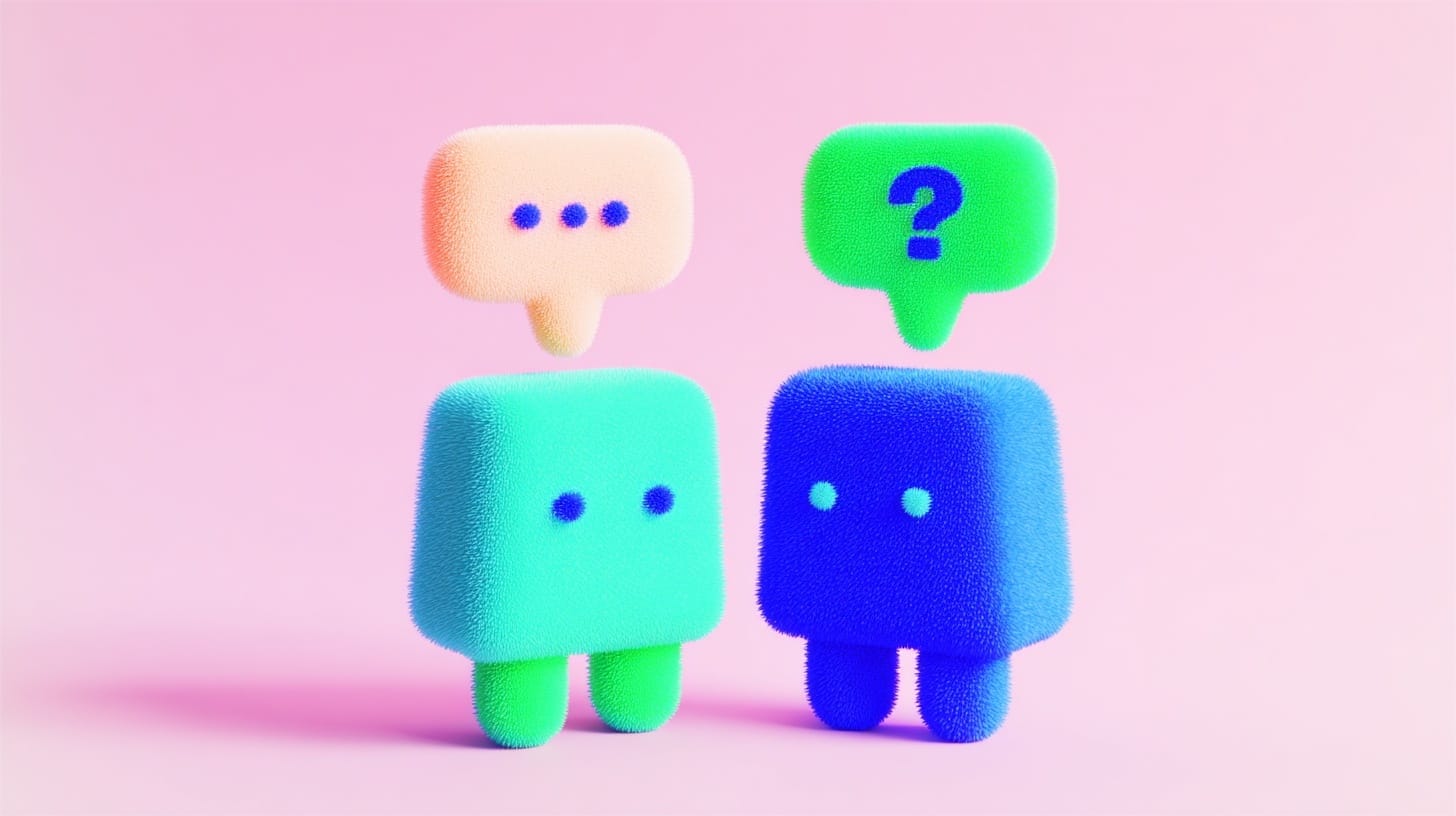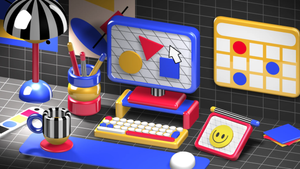Whether we realize it or not, we all have creative processes that help shape our ideas. They show up in small, often unnoticed moments, like taking the time to write a thoughtful Slack message, and in more intentional acts, like planning and running a workshop. Everyone does this, regardless of whether they see themselves as “creative.” Yet we tend to reserve that label for designers, artists, and musicians, even though creativity runs through all of us.
Creative processes are for everyone, from the financial analyst designing a budgeting and forecasting model, to the HR specialist creating a more engaging onboarding experience, to the research scientist developing a new way to test a hypothesis.
Creativity isn’t about who we are, but about the outcome we’re trying to achieve and the process we use to get there.
We run into problems when we see creativity as a solo pursuit or fail to recognize our work as a creative act. Creativity is deeply personal, but it isn’t meant to be solitary. When we make it solely about ourselves, we lose the perspective and energy that come from others, the very things that make our ideas stronger. When we don’t see our work as creative, we often skip the very steps that make creativity possible.
No matter who we are or what we do, we can all ask ourselves, “What’s the best outcome I can create?”
Each of us defines our own creative process, but three non-negotiable principles apply to everyone: exploring ideas, getting feedback, and iterating. These steps fuel creativity by first giving us space to explore possibilities, then inviting others into the process, and finally refining our ideas as many times as needed to reach the best outcome.

The three most important tenets
1 / Diverge on ideas
One of the most important principles is diverging on ideas. Divergent thinking creates space for exploration without the pressure to land on the perfect solution right away. Taking time to consider a wide range of possibilities helps ensure we don’t overlook the idea worth building on.
Diverging on ideas means exploring different solutions and developing them enough for both ourselves and others to understand. It’s a creative process in itself, and ideally, an enjoyable one. Approaching it with a sense of play allows imagination to run free and invites unexpected possibilities. Feasibility and practicality can come later. When we confine ourselves to obvious answers or narrow constraints too soon, we lose the opportunity to think expansively and uncover truly original ideas.
In the workplace, our colleagues often judge us by the quality of our work. That can make us overly focused on how our ideas are perceived, spending too much time polishing an early concept when a simple outline would do. But if we can let go of the need for perfection and focus on generating multiple ideas, we open up far more possibilities and spend our energy where it matters most.
At this stage, what counts isn’t how polished the idea looks, but how wide we allow our thinking to go.
At first, it’s easy to get attached to one idea and overlook other possibilities.
But it’s important to pause and think broadly, exploring different directions before settling on a path. Considering multiple options helps us make better decisions about which ideas to develop further. Investing in the wrong one can be costly, so it’s worth taking the time to find the right approach to build on rather than rushing to a quick answer. In the end, what we’re really looking for is a strong foundation to grow from.
Start by reflecting on your own creative process. Do you make space for divergent thinking? If not, try widening your perspective. When exploring ideas, keep asking yourself, “What if?” This simple question helps you imagine alternative scenarios and consider options you might otherwise overlook. Break down complex problems into smaller, more manageable parts, and tackle each one separately. Try using a timer to set clear boundaries for your idea sessions. A bit of time pressure can be a surprisingly effective creative constraint.

2 / Seek feedback
Seeking feedback is essential to developing our ideas. No matter how self-aware we try to be, our biases and emotions can cloud our judgment. Feedback brings in perspectives we might not have seen on our own. The more ideas we share, the more feedback we invite, leading to richer discussions and more interesting directions. This process helps us uncover blind spots, spot potential issues, and generate stronger ideas. Staying open to constructive criticism, and allowing ourselves to be a little vulnerable, is key.
The aim isn’t a perfect, final answer but continuous improvement.
Asking for feedback can be difficult because it means being open to criticism and allowing ourselves to be vulnerable. With practice, though, we can build confidence and start to see feedback as a tool that helps us reach better outcomes. To truly embrace it, we need a safe space to share ideas without fear of judgment. Creating that space is a shared responsibility between individuals, teams, and the broader organization.
As you evaluate feedback, you’ll begin to notice patterns and find insights that strengthen your creative process. Feedback naturally leads into the next principle, iteration. As you gather feedback, you’ll spot opportunities to improve, generate new ideas, and refine or rule out others.
Begin by asking people you trust for their input, then gradually widen the circle of people you seek feedback from. Ask open-ended questions and use “why” to encourage deeper thinking and uncover underlying issues. Stay open to constructive criticism, as it often reveals insights you might not see yourself. Think of feedback as a gift that helps you grow and improve.

3 / Relentlessly iterate on ideas
As we move to the third principle, we can see how all three work together. We start by gathering feedback from a wide range of sources, then refine and build on our ideas using what we’ve learned. During this stage, it’s important to thoughtfully evaluate all feedback and decide how best to apply it.
Iterating on our ideas gives us the chance to refine and strengthen them. Through this process, we can improve our work, uncover better directions, and raise the overall quality of what we create.
This process isn’t strictly linear, and it’s up to us to decide how many rounds of iteration and feedback are needed. It’s more of a continuous loop that continues until the work feels like it’s there, or has gone as far as it can go.
Iteration is an inherently human process. It’s normal to feel overwhelmed by feedback, even when it’s helping. Breaking it down and visualizing each step can make it easier to manage and stay focused on progress.
Taking clear notes and grouping similar pieces of feedback can make the process easier to manage. Remember that feedback is input for your consideration, it’s up to you to decide what to take on and how to use it.
Knowing when to stop iterating takes practice. With time, you’ll develop a sense of when an idea has matured and has reached its peak. Until then, one helpful concept to keep in mind is the law of diminishing returns. Notice the scale of improvement with each round. If the changes start to feel small or incremental, the idea has likely reached its potential, and further tweaks may not add much value.
When refining your ideas, save different versions so you can compare and discuss them with others. Bring your ideas to life by creating mockups or working prototypes. The more tangible your concept, the more useful the feedback will be. Keep every iteration, if you’re a designer, hold onto all your design rounds; if you’re a financial analyst, do the same for your models and spreadsheets.
Creativity is not exclusive to those who identify as “creative.”
Anyone can tap into their creative potential, regardless of profession or background. We can embrace three core tenets to unlock this potential: diverging on ideas, seeking feedback, and iterating. By adopting these principles, we can create a culture of creativity and innovation in our personal lives, workplaces, and communities. So, apply these tenets and unleash your creativity!
Creativity is a journey, not a destination; continuous improvement is the goal.





